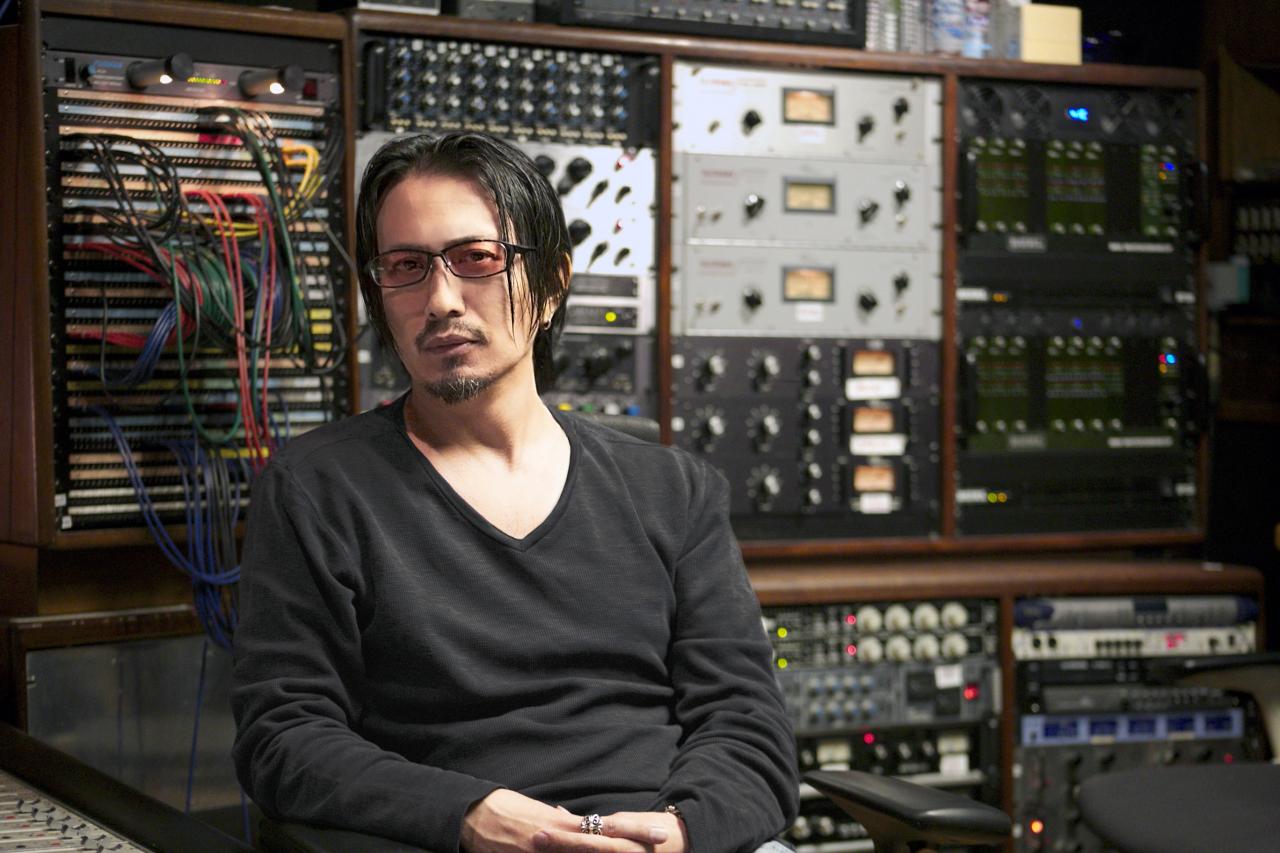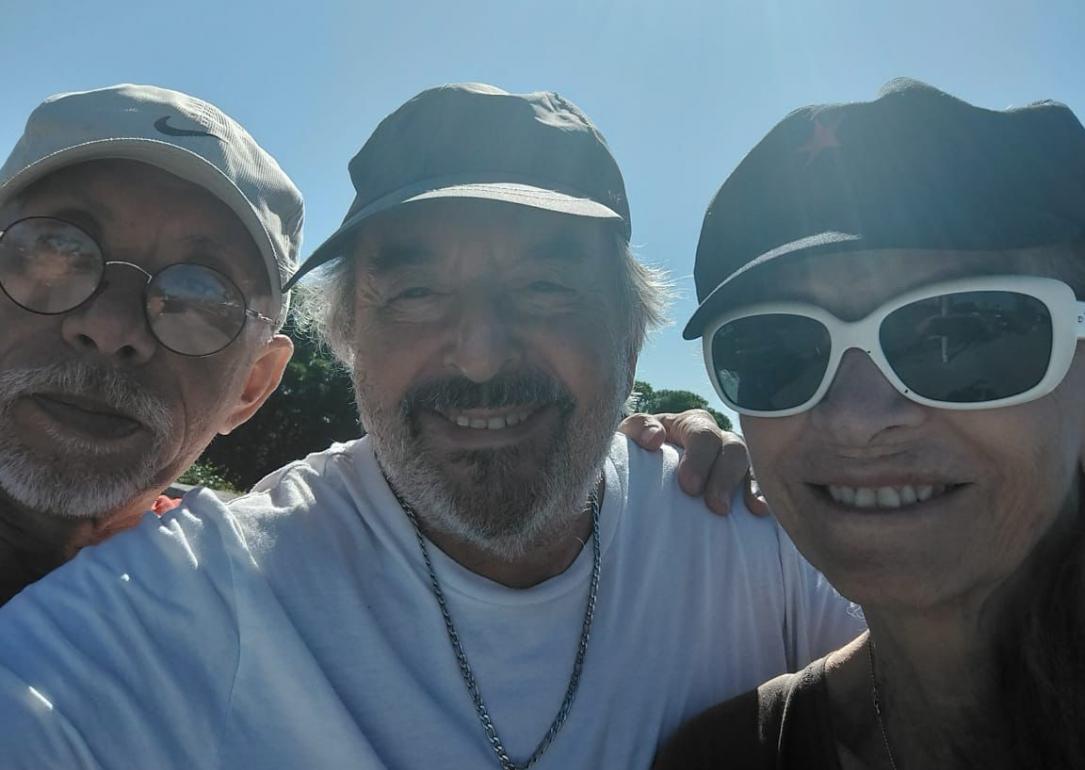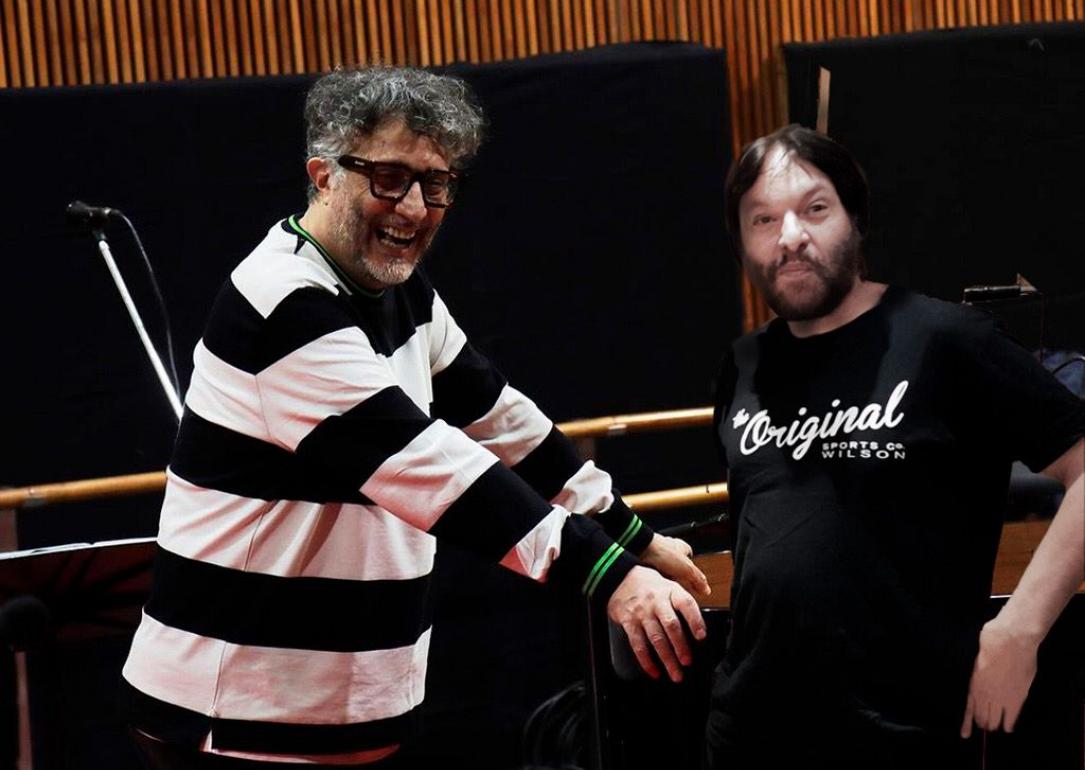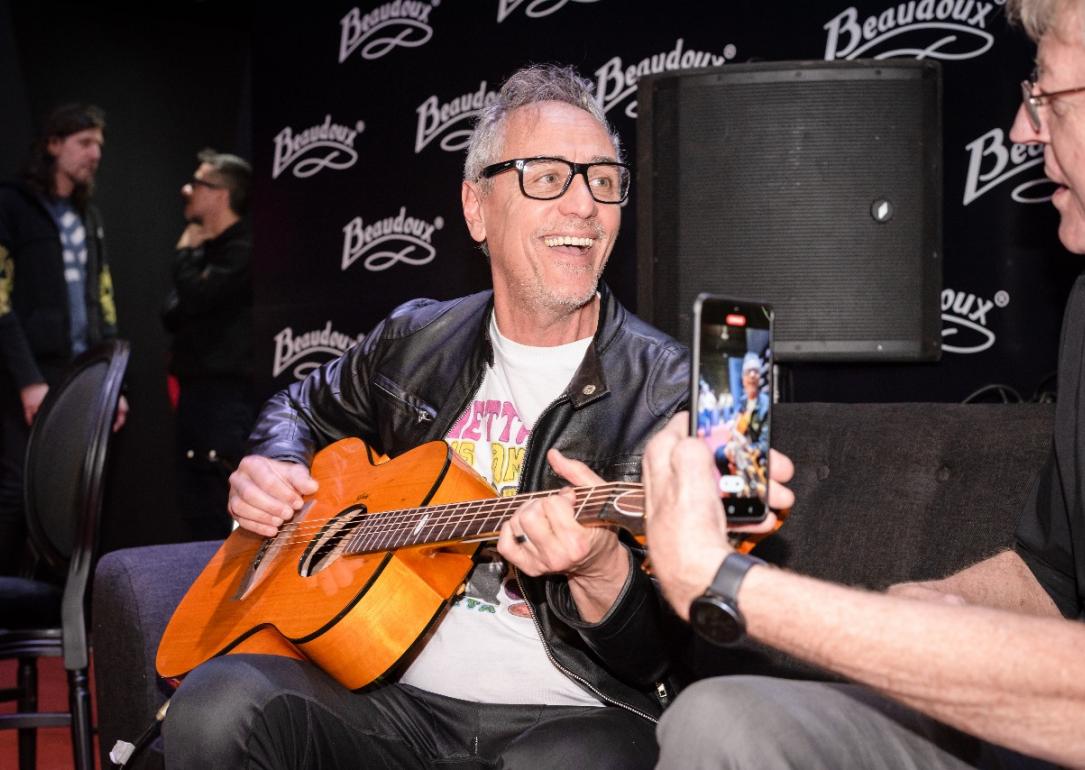Entrevista: Hernán Osuna
Más allá de sus pergaminos musicales –ganó un premio Grammy y dos Grammy Latinos, trabajó con artistas como Draco Rosa, Shania Twain, Limp Bizkit, Wyclef Jean, John Mayall y otros- lo interesante de Sadaharu Yagi (de él es quien estamos hablando) es que es una de esas personas con las cuales te sentarías a tomar un café o una cerveza y charlar, seas música, músico o no.
Este ingeniero de sonido, de mezcla, y productor japonés reside en Los Angeles desde hace muchos años y allí logró construir una gran carrera en la industria a base de esfuerzo y dedicación. Pero, por otra parte, Yagi es un conocido defensor del medio ambiente (es Embajador de Buena Voluntad de su ciudad natal, Kitakyushu) que posee una sensibilidad y un sentido analítico diferente. Por eso no sorprende que la nota termine virando hacia temas relacionados al medio ambiente, su opinion sobre Greta Thunberg (no podíamos no preguntarle sobre esta adolescente sueca, que con su activismo, carácter punk y dientes apretados logró cabrear a presidentes como Donald Trump y Jair Bolsonaro) y cierta crítica social.

Sin dudas, uno de los ejes de la charla es su trabajo con Draco Rosa, el reconocido cantante y compositor puertorriqueño con el que ganó en 2013 un Grammy Latino por Vida (álbum de duetos junto a figuras como Ricky Martin, Alejandro Sánz, Maná, Shakira, Enrique Bunbury, Andrés Calamaro, Juanes, José Feliciano y otros) y con quien volvió a llevarse otro Grammy Latino por el disco Monte Sagrado (2018) en la categoría Mejor Àlbum de Rock. En dicho material además de Rosa (guitarra y voz) participaron músicos de la talla de René Camacho (contrabajo), Doug Pettibone (guitarras) y Toss Panos, un baterista que ha tocado con gente como Sting, Paul Rodgers y Steve Lukather.
Lo interesante también es que Yagi comenta, más allá de lo estrictamente relacionado al mundo sonoro, el poder de superación personal de Rosa. La lucha de un gigante. Este ingeniero y productor japonés vio con sus propios ojos cómo el puertorriqueño grababa Vida mientras batallaba contra un linfoma No Hodgkin (un tipo de cáncer en el sistema linfático) que finalmente superó. Por otra parte, Yagi aprendió junto a Rosa lo que es volver a empezar: cuando estaban realizando el registro de Monte Sagrado, en 2017, la destrucción devastadora del huracán María arrasó Puerto Rico y obligó a trasladar la producción del álbum a California.
En definitiva, la entrevista de REC Or Play con Sada – tal es su apodo- no sólo brinda detalles interesantes sobre produccion, microfoneo e ingenieria de sonido, sino que termina revelando el perfil humanista de este reconocido japonés que empezó tocando la batería en un grupo rockero de su Kitakyushu natal. Señoras y señores, Sadaharu Yagi:
English version below
Naciste en Kitakyushu, Japón. ¿Cómo fue tu infancia y en qué momento empezaste a dar tus primeros pasos en el mundo de la música?
Comencé a ir a una escuela de música en mi pueblo para aprender batería. Tenía 11 años. En ese entonces no estaba realmente interesado en la música, pero mi madre me forzó de alguna manera a aprender: no quiso que estudiara piano o guitarra, ella me impulsó a que estudiara batería. Todavía recuerdo que odiaba ir a la escuela los sábados y perder tiempo de esparcimiento con mis amigos. Poco tiempo después, algunos chicos me llamaron para que me uniera a ellos como baterista. Muchos niños querían ser cantantes o guitarristas, pero no muchos allí podían tocar la batería, así que yo era uno de los raros. La experiencia de estar en una banda me abrió mucho los ojos, porque me hizo dar cuenta que podía brillar y resultar atractivo para las mujeres tocando música rock (risas). En ese momento empecé a dejar de odiar a mi madre y me sentí más agradecido con ella.
Trabajaste con un amplio espectro de artistas que van desde el pop mainstream al rock alternativo. ¿Cuál es la clave para abordar diferentes géneros musicales?
El rock es pura energía. No se trata de cuánto retocás y pulís el sonido en Pro Tools. Si no podés capturar la energía adecuada proveniente de los artistas, no hay nada que puedas hacer para que suene mejor. En las producciones modernas de música, ya no hay una gran diferencia entre el pop y el rock. Muchas canciones de rock necesitan ser pulidas para tener un acabado “claro” al final. Mientras tanto, la escena de rock alternativo todavía sigue siendo auténtica. Se hace foco en la crudeza de la energía y lo puro de la performance. Tenés que tener la apertura mental para captar todo tocado en vivo, en vez de pensar luego en arreglarlo o retocarlo digitalmente. Definitivamente, y muy de a poco, el rock alternativo está volviendo a ser parte de la escena actual.
Hablemos sobre Monte Sagrado, el álbum de Draco Rosa por el cual ganaste un Grammy Latino junto a él en la categoría Mejor Álbum de Rock. ¿Cuándo y dónde se grabó el material?
El proyecto originalmente empezó en los Phantom Vox Studios de Puerto Rico en 2017. Sin embargo, apenas comenzamos a grabar, el huracán María destrozó al país. Fue uno de los peores huracanes de la historia y dañó gravemente la red eléctrica de la isla, dejando a más de 3 millones de residentes sin electricidad. Debido al corte de energía en Puerto Rico, Draco no pudo seguir trabajando allí y decidió trasladar la producción del álbum a Los Ángeles.
Y una vez que arribaron a Los Angeles, ¿dónde grabaron?
En múltiples locaciones. Primero fuimos a un estudio privado en Pasadena y a Kingsize Soundlabs, donde grabamos canciones con su Neve 8068 vintage, la misma consola que Draco posee en Puerto Rico. También, trayendo mucho equipamiento de audio, configuramos un espacio de grabación temporal en la casa de Draco, donde cortamos algunas voces y guitarras adicionales.
¿El registro se hizo en forma analógica?
No. Pero definitivamente teníamos la mentalidad analógica para la producción del álbum. Ajustar digitalmente la performance de Draco disminuye la belleza de su música y mata su autenticidad. Por lo tanto, todas las partes que podés escuchar en el álbum son pura performance de Draco y los músicos, sin autotune o trucos digitales. Si el disco suena como grabación analógica, probablemente sea porque usé un reloj maestro especial, el Abendrot Everest 701, que nos permite grabar digitalmente sonido analógico manteniendo la calidad analógica original. La gente dice que el sonido digital no es tan cálido como el analógico, pero no tiene nada que ver con la teoría real de "analógico" y "digital". En el proceso de conversión A-D perdés algo de información de la señal analógica debido al "jitter", y es por eso que la gente dice "Lo digital no es lo suficientemente cálido". Si la conversión A-D no tiene ninguna pérdida de información de la fuente de sonido, incluso en Pro Tools, las señales que grabaste seguirán sonando cálidas y no sonarán delgadas y "digitales".
¿Cuál fue el concepto general sobre el álbum? ¿Qué se buscó en términos del sonido?
La visión de Draco Rosa para el disco fue muy vívida y clara. Sabía lo que quería desde el principio. Después de pasar por muchos momentos difíciles, logró vencer dos veces al cáncer. Cuando se reunió conmigo por primera vez en 4 años para hablar sobre el nuevo álbum, se sentía sumamente vivo y bendecido por este nuevo capítulo de su vida. Siguiendo este sentimiento, quería hacer un nuevo material lleno de poder, energía y vitalidad. La vibra del LP es similar a su álbum anterior Vagabundo, que fue remasterizado y lanzado recientemente en vinilo. Monte Sagrado es un álbum conceptual. Entre las canciones, podés escuchar el paisaje sonoro desde los lugares donde vagaba el vagabundo (aquí nuestro entrevistado se refiere a Draco Rosa como el vagabundo, por la letra de la canción homónima que dice: “Rodando por el mundo camino, camino/ Pregunto a la quimera el enigma del destino/ Nómada loco, noctámbulo y soñador/Un vagabundo”). Como podés ver en el video musical de "Que Se Joda El Dolor", el vagabundo incluso estaba en Tokio. Fue divertido para mí pasar buenos momentos con él en mi país natal.
Las guitarras en “333” tienen reminiscencias al sonido de Jerry Cantrell (Alice In Chains). ¿Qué guitarras y amplificadores se usaron en esta canción?
Muy interesante tu observación. De hecho, Draco y yo hablamos mucho sobre el rock alternativo de los 90’ durante la producción del álbum. “333” es una canción de apertura con inmensa energía. Aunque Draco tocó algunas guitarras diferentes en el LP, si no recuerdo mal, la viola que suena en la intro sucia y vanguardista de “333” fue su Supro de la década de 1960. El amplificador que usó para todo el disco fue dividido por 13 con el gabinete de altavoz Fender 2x12. Todo su sonido de guitarra gordo y grungy se grabó con micrófonos Shure SM57 y Royer R-121.
En general, la batería suena muy grande y los platillos también, como en las viejas grabaciones de Led Zeppelin. ¿Cuál fue el enfoque al momento de registrar el sonido del kit?
Toss Panos, el baterista del álbum, es uno de mis favoritos. Su estilo es único y versátil. Puede apegarse a un simple groove de rock and roll, pero también es capaz de agregar múltiples estilos diferentes como jazz, latin e incluso rock pesado. Como podés escuchar en “333”, los patrones que tocó no son el típico groove de rock. Los platillos no se usan sólo para agregar acentos cada 8 compases. Los toms no se usan sólo para los fills de batería. Todos los elementos de su kit suenan constantemente a través de las canciones. Si no capturás la interpretación de este tipo de bateristas de la manera correcta, todo el kit simplemente sonará desordenado y los sonidos de los platillos se volverán suaves fácilmente. La clave para capturar el groove de manera firme y vívida es la colocación de los overheads y los micrófonos de la sala. Configuré 2 pares de mics de sala estéreo. El primero fue un Royer SF-24 a 5-6 pies de distancia del kit. El segundo par fue de Coles 4038 ubicados lejos del kit para que pudieran capturar la hermosa acústica de la sala en vivo del Studio A, en Kingsize Soundlabs. La respuesta suave y transitoria de los micrófonos ribbon de cinta marca una gran diferencia, especialmente si se colocan cerca del set. La batería grabada en Puerto Rico fue registrada por Héctor Espinosa, quien es mi amigo y un gran ingeniero. Hizo un gran trabajo y también fue una parte importante de este material.
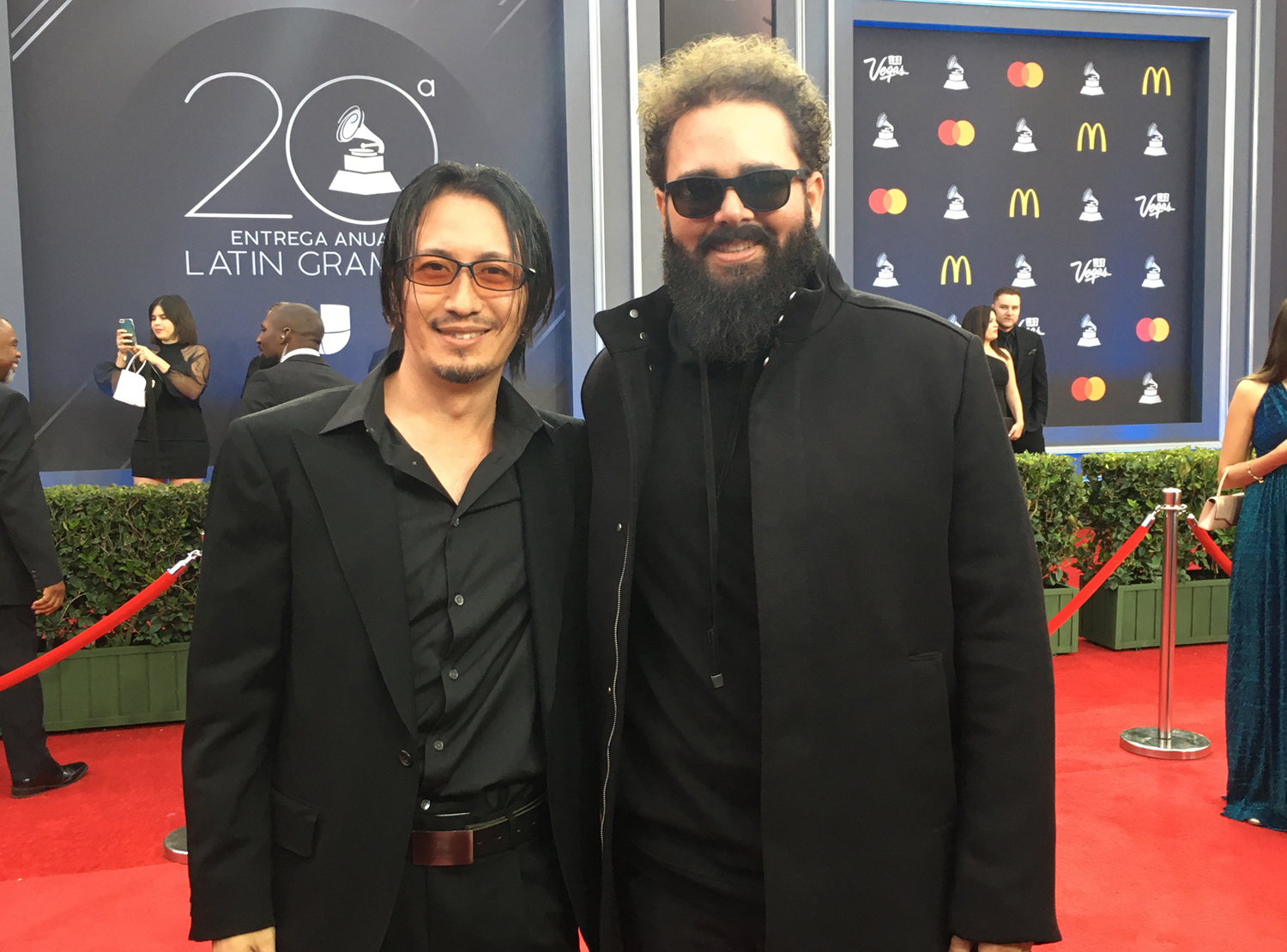
Sadaharu Yagi con Héctor Espinosa en los Latin Grammy
Trabajaste con Draco Rosa en Vida, un gran álbum de duetos en el que el artista estaba luchando contra un linfoma. Seis años después de esa experiencia y luego de la grabación de Monte Sagrado, ¿cómo ves a Draco actualmente? ¿Qué lecciones de vida aprendiste cuando lo viste batallando contra esa enfermedad?
Siempre estoy muy impresionado de lo honesto que Draco es consigo mismo y también con su público. Trabajé con muchos artistas de fama mundial y puedo decirle con confianza a la gente que Draco es uno de los más auténticos con los que he trabajado. Cuando estaba haciendo el álbum en 2011, su enfermedad hizo que todo fuera tan difícil… No fue fácil para él terminar el trabajo. Sin embargo, como lo muestra el título del disco, Vida, siempre expresó sus sentimientos de una manera verdadera, sin ocultar su estado de salud a sus fanáticos. Al mismo tiempo, no era pesimista y a menudo me contaba qué cosas le entusiasmarían hacer después de que superara su enfermedad. Siempre fue positivo y fiel a sí mismo, aceptando cualquiera que sea la situación actual de su vida y reflejándolo en sus trabajos creativos.
Monte Sagrado se hizo exactamente de la misma manera. Después de superar la enfermedad, quería expresar su vigor y pasión de ese momento a través de su música. Como todos saben, el negocio del entretenimiento es la industria de vender "sueños" a la gente. Debido a la naturaleza de este sector, a veces ves algunas situaciones de mierda y tenés que lidiar con personas falsas. Draco es todo lo contrario y siempre me siento agradecido de estar junto a él en el estudio, utilizando mi tiempo y energía para hacer algo genuino y auténtico.
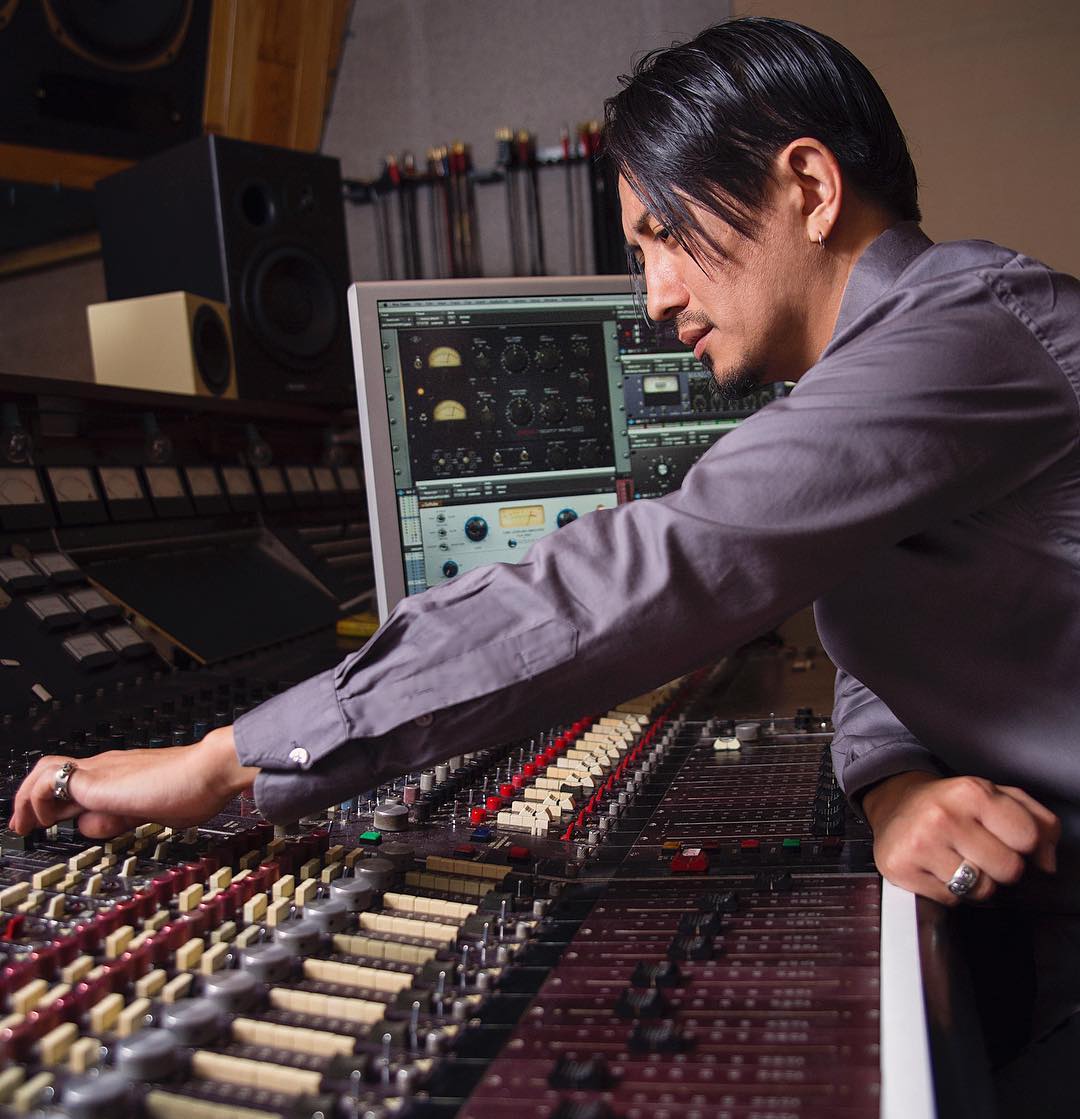
PH: Kristina Sado
¿Qué podés decir sobre la música japonesa y la diferencia entre la oriental y la occidental? Japón tiene grandes compositores. Personalmente soy fanático de Ryuichi Sakamoto.
Ryuichi Sakamoto es un gran artista y compositor, los japoneses estamos muy orgullosos de él. Puede sonar cursi, pero creo que su singularidad proviene, en parte, de su origen no occidental. La música moderna en el mundo se basa en el sistema occidental, ya sea algo del género pop o clásico. La música tradicional japonesa no se basó en una escala de doce tonos. Los japoneses solían hacer música con escalas pentatónicas hasta que el país se occidentalizó /modernizó en el siglo XIX. Como sabrás, Ryuichi también está muy interesado en diferentes tipos de música del mundo y también en los sonidos no humanizados existentes en la naturaleza, que están completamente libres de la teoría musical humana. Probablemente Sakamoto no está pensando en ese tipo de cosas cuando compone, pero estos factores podrían estar afectándolo inconscientemente y esa podría ser una de las razones por las que sus obras siempre suenan muy especiales.
Para los artistas japoneses, este fondo no occidental podría ser un punto fuerte o un punto débil dependiendo de cómo lo aborden.
Además de lo estrictamente musical sos defensor del medio ambiente y este año presentaste una canción para el Programa de las Naciones Unidas para el Medio Ambiente (United Nations Environment Programme, UNEP, en inglés) durante la celebración del Día Mundial del Medio Ambiente, realizada el 7 de junio en la sede de Naciones Unidas en Viena. Contame más al respecto.
Actualmente estoy sirviendo como Embajador de Buena Voluntad de la ciudad de Kitakyushu. Kitakyushu fue un importante centro industrial de la nación, pero desafortunadamente, también se hizo conocida como la urbe más contaminada de Japón en los años 60. Sin embargo, la ciudad trabajó duro con la gente y las industrias locales del hierro, y combatieron con éxito todos los problemas ambientales. En 2011, junto con París, Chicago y Estocolmo, la Organización para la Cooperación y el Desarrollo Económico (OCDE) nombró a Kitakyushu como una de las cuatro ciudades modelo de crecimiento verde.
El tema del Día Mundial del Medio Ambiente 2019 fue "Contaminación del aire". Obviamente esto era algo que no podía dejar de interesarme. Decidí formar equipo con mis amigos y músicos italianos, Azzura y Federico Ferrandina, quienes estaban entusiasmados por unirse y crear una canción sobre la protección de la tierra y los objetivos de Desarrollo sostenible. Escribimos el tema no para culpar a nadie, sino para alentar a las personas a avanzar paso a paso desde donde estamos ahora y contribuir a crear un mundo mejor para todos nosotros.
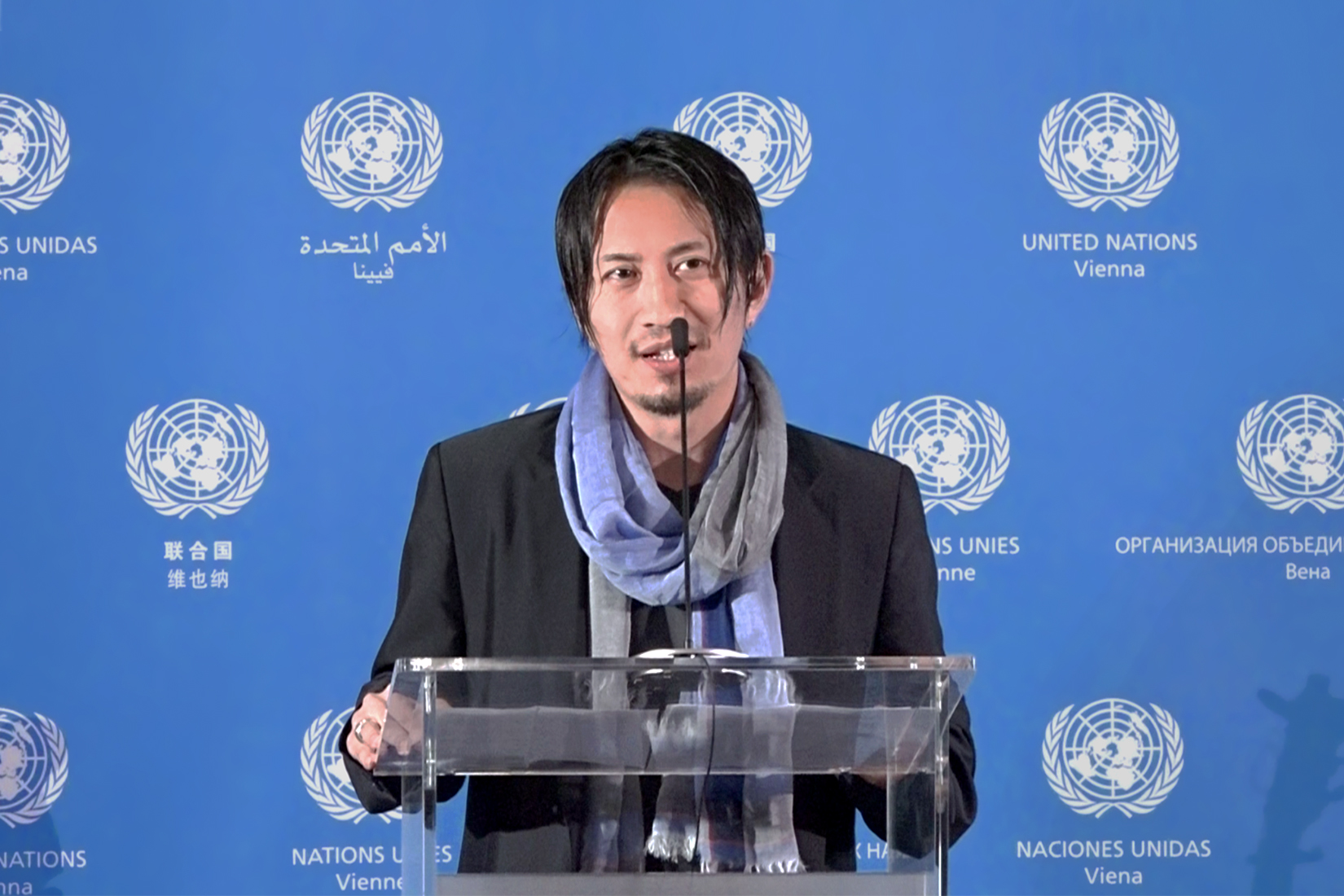
Me imagino que debió haber sido una experiencia increíble…
Estamos absolutamente felices de haber sido invitados por las Naciones Unidas en Viena para interpretar la canción en su evento anual y difundir el mensaje al mundo. Unos días antes de estar en la capital austríaca, el Programa de Medio Ambiente de las Naciones Unidas nos invitó a tocar este track para la ceremonia del Día Mundial del Medio Ambiente en Sarajevo, que es la ciudad que tiene el aire más contaminado en Europa en este momento. Hablando con el personal local, aprendí mucho sobre el tema en Sarajevo y entendí por qué estaban luchando tanto para salir de esta difícil situación.
Por supuesto, los problemas ambientales no se resolverán de la noche a la mañana, pero creo firmemente que todos podemos hacer algo si somos conscientes de las decisiones que tomamos en nuestra vida diaria. Debemos saber que proteger nuestro planeta y nuestro medio ambiente significa protegernos a nosotros mismos como humanos a largo plazo. Me siento realmente honrado de que las Naciones Unidas me hayan ofrecido la oportunidad de contribuir a algo que realmente me importa.
No puedo dejar de preguntarte por Greta Thunberg, la activista sueca de 16 años -nombrada por la revista Times como “Persona del Año”- que logró incomodar a presidentes como Donald Trump o Jair Bolsonaro. ¿Qué opinás sobre ella?
Es una figura muy poderosa en este momento. Sé que parte de sus discursos y la forma en que se expresó, con fuerte ira, resulta controvertida para algunas personas. Sin embargo, estoy feliz de ver a una adolescente hablar en contra de la autoridad sin mostrar miedo y realmente expresar lo que le apasiona y le preocupa. Ella creó un movimiento mundial, lo cual es sorprendente, porque hoy en día no se ve mucho este espíritu rebelde en niños o adolescentes. "La ira es una energía", cantaba John Lydon. Solía haber mucha buena música con espíritus rebeldes adolescentes que conmovieron a las personas y los sentimientos públicos. El poder de la juventud, ¿sabés? Ahora los adolescentes están demasiado ocupados en verse geniales y elegantes en las redes sociales. Puedo ver que Greta Thunberg tiene un espíritu punk ardiente en ella y eso es exactamente lo que le falta al mundo en este momento.
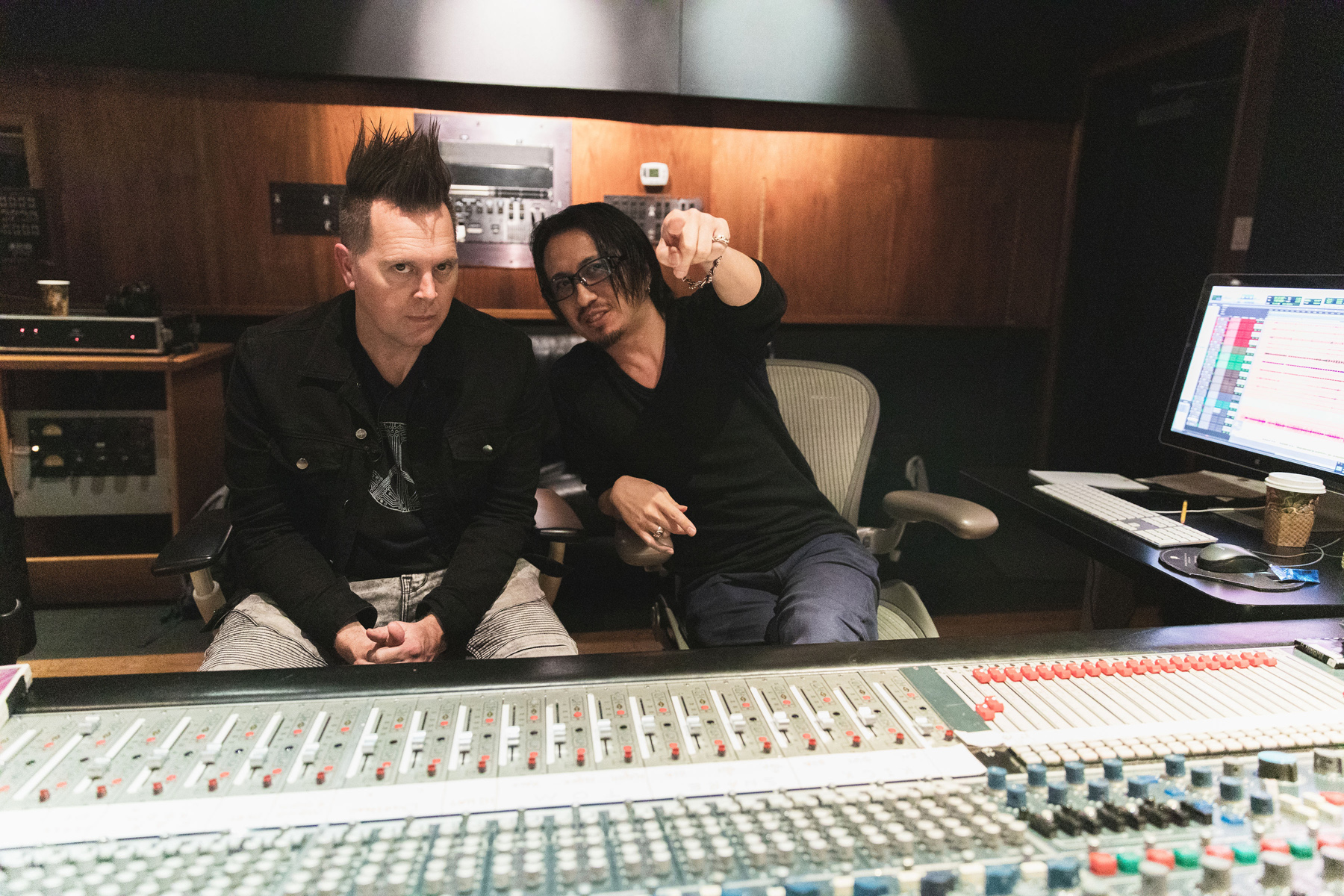
Sadaharu Yagi y Jeremy Buck. Credit: Erin & Jake Photography
¿Qué planes tenés para el 2020?
El año comenzará con el proyecto en el que estoy trabajando actualmente para el músico estadounidense Jeremy Buck. Es un gran artista, cantante y compositor. Estoy coproduciendo algo de música con él. Acabamos de terminar una gran sesión en EastWest Studios con Steve Ferrone en la batería, Rhonda Smith en bajo, Toshi Yanagi como guitarrista y Matt Rohde en teclados. No hace falta decir que la rompieron y que todos lo pasamos muy bien en el estudio.
Siempre disfruto trabajar con los mejores músicos del mundo. Sin embargo, en 2020, planeo invertir más tiempo y energía en jóvenes talentos, especialmente artistas de rock alternativo. Realmente siento que el rock alternativo, o la música con algo de energía pura y primitiva, está volviendo a la escena. Hace un par de meses vi una banda irlandesa de post-punk llamada Fontaines D.C en un pequeño club en Los Ángeles. Ese fue uno de los mejores espectáculos que vi en 2019. Me gusta mucho la música pop y la música electrónica, pero ahora el mercado parece hípersaturado con el mismo tipo de producciones de sonido para computadoras portátiles. Definitivamente el mundo está esperando cosas diferentes, algo nuevo por venir y algo que venga a abrirse paso nuevamente.
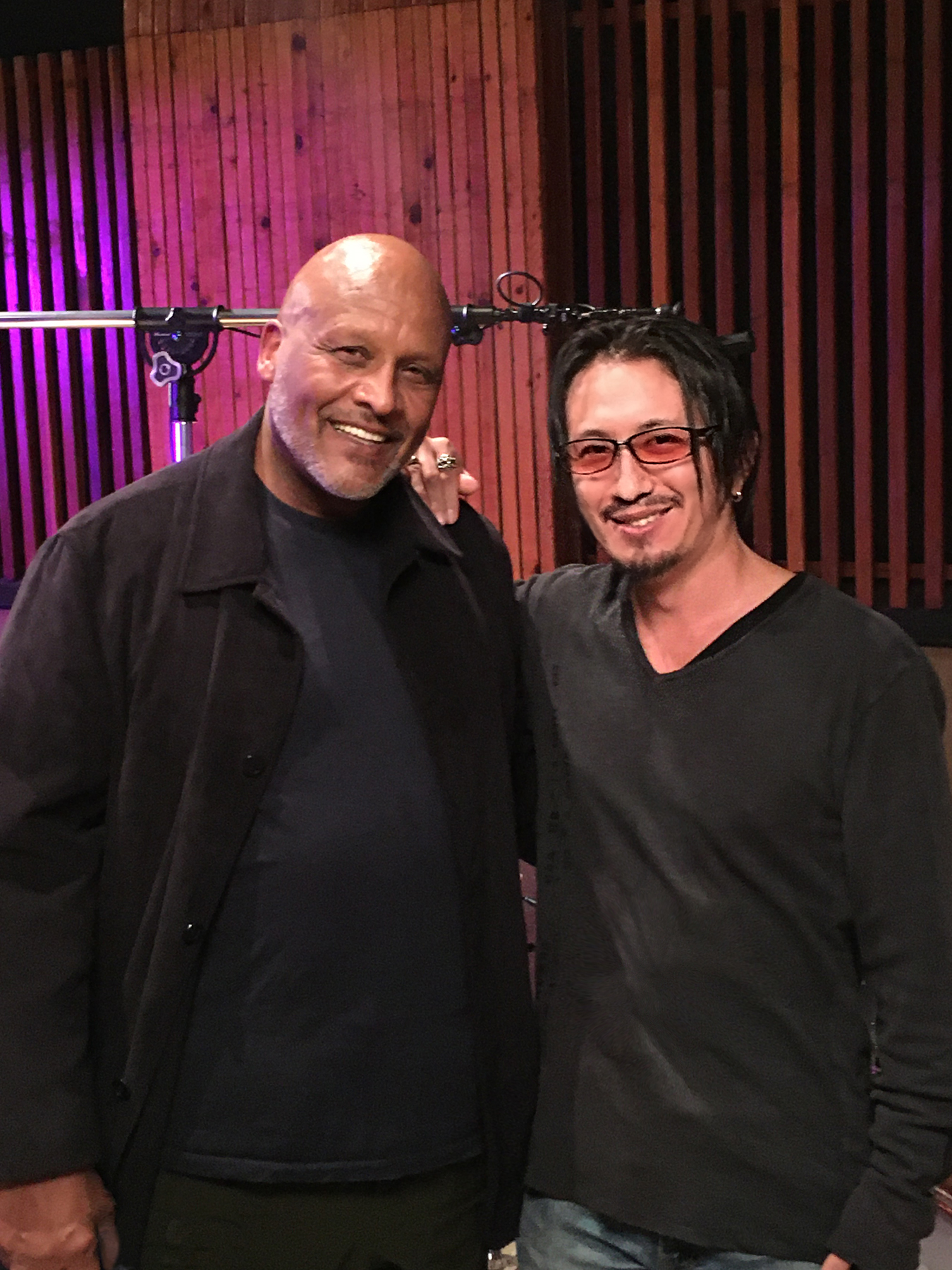
Sadaharu y Steve Ferrone
ENG VERSION
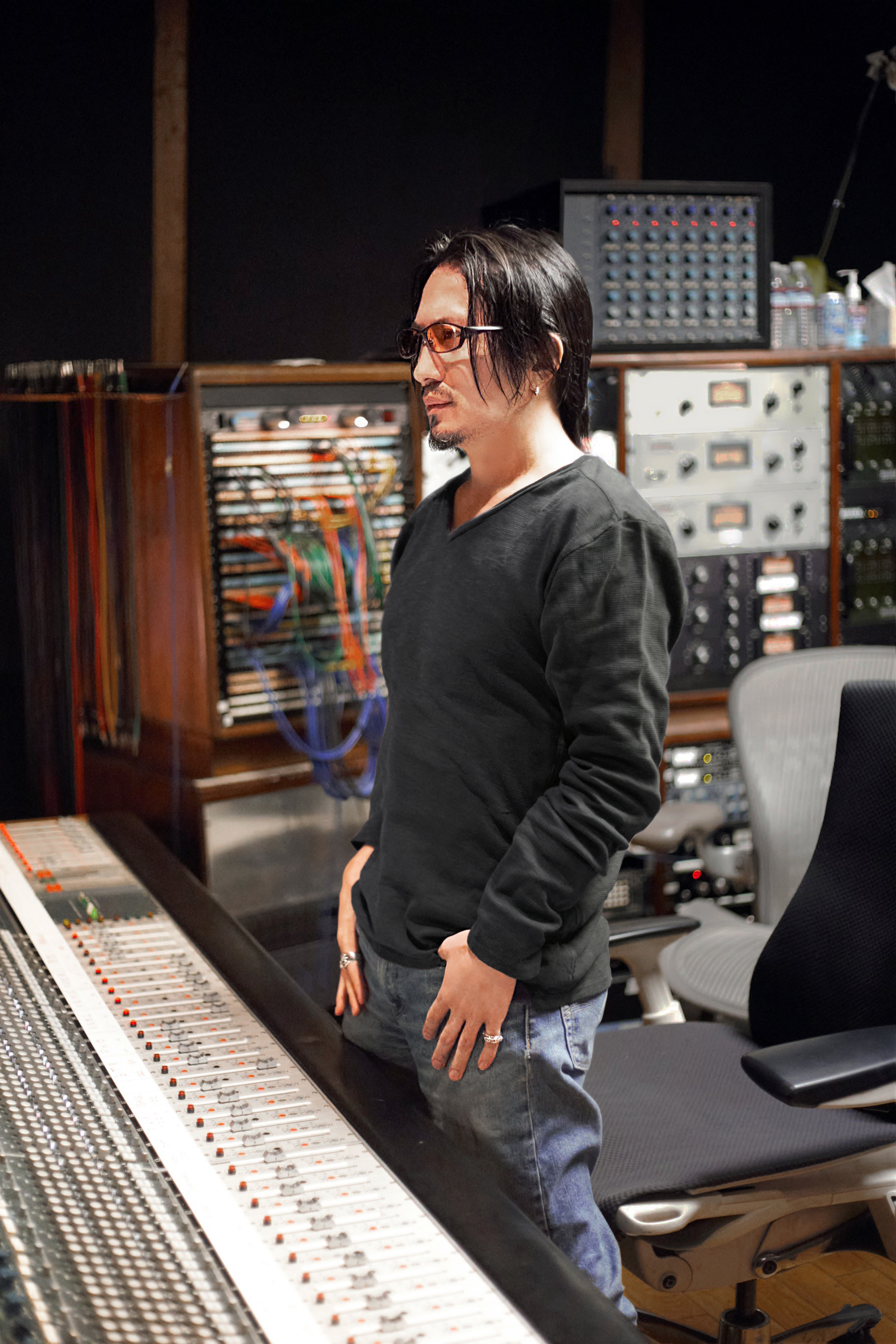
Beyond his musical scrolls - he won a Grammy and two Latin Grammy awards, he worked with artists such as Draco Rosa, Shania Twain, Limp Bizkit, Wyclef Jean, John Mayall and others - the interesting thing about Sadaharu Yagi (the guy who we're talking about) is that he is one of those people with whom you would sit to drink a coffee or a beer and chat, whether you are a musician or not.
This Japanese engineer, mixer, and producer has resided in Los Angeles for many years and there he managed to build a great career in the industry based on effort and dedication. But, on the other hand, Yagi is a well-known defender of the environment (he is a Goodwill Ambassador of his hometown, Kitakyushu) who has a different sensitivity and analytical sense. That is why it is not surprising that the chat ends up turning towards issues related to the environment, his opinion about Greta Thunberg (obviously we had to ask him about this Swedish teenager, who with his activism, punk character and clenched teeth managed to piss off presidents like Donald Trump and Jair Bolsonaro) and some social criticism.
Undoubtedly, one of the axes of the talk is his work with Draco Rosa, the renowned Puerto Rican singer and songwriter with whom he won in 2013 a Latin Grammy for Vida (duet album with figures such as Ricky Martin, Alejandro Sánz, Maná, Shakira, Enrique Bunbury, Andrés Calamaro, Juanes, José Feliciano and others) and with whom he again took another Latin Grammy for the album Monte Sagrado (2018) in the category Best Rock Album. In this material, besides Rosa (guitar and voice), there are musicians such as René Camacho (double bass), Doug Pettibone (guitars) and Toss Panos, a drummer who has played with people like Sting, Paul Rodgers and Steve Lukather.
The interesting thing is that Yagi comments, beyond what is strictly related to the sound world, Rosa's personal self-improvement power. The fight of a giant. This Japanese engineer and producer saw with his own eyes how the Puerto Rican recorded Vida while battling a Non-Hodgkin lymphoma (a type of cancer in the lymphatic system) that he finally overcame. On the other hand, Yagi learned with Rosa what it is to start over: when Monte Sagrado was recorded in 2017, the devastating destruction of Hurricane Maria destroyed Puerto Rico and forced the production of the album to be transferred to California.
In short, the REC Or Play interview with Sada - such is his nickname - not only provides interesting details about production, microphones and sound engineering, but also reveals the humanist profile of this renowned Japanese who started playing drums in a rock band of his native Kitakyushu. Ladies and gentlemen, Mr. Sadaharu Yagi:
You were born in Kitakyushu, Japan. How was your childhood there and when did you start taking your first steps in music?
I started going to a music school to learn drums in my hometown when I was 11. I wasn’t really interested in music back then but my mom kinda forced me to learn it. Not piano or guitar. Mom pushes her kid to learn drums. Isn’t it interesting? I still remember that I hated going to music school every Saturday losing my free time to hang out with my friends. Soon after, I was asked by other kids in my school to join their band as a drummer. There were many boys who wanted to be a singer and guitarist but not many kids could play the drums in my school and so I was one of the rare ones. Being in the band was a big eye-opening experience because I noticed that I can shine and get a lot of attention from girls by playing rock music, haha. That was the moment I stopped hating my mom and even started feeling grateful to her.
You have worked with a large range of artists between mainstream pop, but also alternative rock. Which is the key when it comes to work in different musical genres?
Rock’n’Roll is all about energy. It’s not about how much you tweak and process polishing up the sound in Pro Tools. If you couldn’t capture the right energy coming out of the artists, there would be nothing you can do to make it sound better. In modern music productions, there is no big difference between pop and rock anymore. Many rock tunes also need to get polished and get a clear-coat finish at the end. In the meantime, alternative rock scene is still more authentic. The focus is more on raw energy and pure performance. You better have the mindset to capture everything live, and better not think about fixing or digitally tweaking the captured performance later. Alternative rock is slowly but definitely coming back in the scene now.
Let ́s talk about Monte Sagrado, the album that made you win a Latin Grammy with Draco Rosa. When and where was the material recorded?
The project originally began at Phantom Vox Studios in Puerto Rico in 2017. However, right after the start, Puerto Rico was badly destroyed by Hurricane Maria, which was one of the worst hurricanes in history and heavily damaged the island's power grid, leaving more than 3 million residents without electricity. Because of the power outage in Puerto Rico, Draco couldn’t keep working there and decided to move the album production to Los Angeles.
In Los Angeles, we have recorded the album at multiple locations. It took place at a private studio in Pasadena, and Kingsize Soundlabs where we recorded songs with their vintage Neve 8068, the same console Draco owns in Puerto Rico. Also bringing a lot of audio gear, we set up a temporary recording space in Draco’s house, where we cut some vocals and additional guitars.
Was the recording analogue?
We didn’t record the album analog. But we definitely had the analog mindset for the album production. Digitally tweaking Draco’s performance lessens the beauty of his music, and kills his authenticity. So all the parts you can hear in the album are pure performance from Draco and the musicians without autotune or any digital cheatings. If the album sounds like analog recording, it’s probably because I used a special master clock, Abendrot Everest 701, which allows us to digitally record analog sound maintaining the original analog quality. People say that digital sound is not as warm as analog, but it’s nothing to do with the actual theory of “ Analog” and “ Digital”. In the process of A-D conversion you lose some information from the analog signal because of “jitter”, and that is why people say” Digital is not warm enough”. If the A-D conversion doesn’t have any information loss from the sound source, even in Pro Tools, the signals you recorded will still sound warm and won’t sound thin and “digital”.
Which was the general concept about the album? What was sought in terms of the sound?
Draco’s vision for the album was very vivid and clear. He knew what he wanted from the beginning. He had many tough moments conquering cancer twice. When he got together with me for the first time in 4 years to talk about the new album, he was feeling so alive and blessed about a new chapter of his life. Following this feeling he wanted to make a new LP filled with power, energy and vitality. The vibe of the material is similar to his early album Vagabundo, which was remastered and released on vinyl recently. Monte Sagrado is a conceptual album. Between the songs, you can hear the soundscape from the places where the vagabond was wandering. As you can see the music video of “Que Se Joda El Dolor”, the vagabond was even in Tokyo. It was fun for me to spend great times with him in my home country.
The guitar in “333” has some Alice In Chains- Jerry Cantrell reminiscence. Which guitars and amps were used in this song?
Very interesting analysis, indeed. Draco and I talked a lot about the 90s alternative rock during the album production. “333” is an opening tune with immense energy. Although Draco played a few different guitars in the album, if I remember it correctly, the dirty edgy intro guitar on 333 was his Supro from the 1960s. The amp he used for the entire CD was Divided by 13 with Fender 2x12 speaker cabinet. All his fat “grungy” guitar sound was recorded with SM57 and Royer R-121.
In general, drums sounds very big and it seems that the cymbals were also big like Led Zeppelin old stuff. Which was the approach during the drums recording process?
Toss Panos is one of my favorite drummers. His drumming style is very unique but versatile. He can stick to one simple tight rock’n’roll groove but also can go off adding multiple different styles like Jazz, Latin, and even heavy rock. As you can hear in “333”, the patterns he played are not typical rock groove. The cymbals are not used just to add accents in every 8 bars. The toms are not played just for the drum fills. All the elements of his drums kits are constantly played through the songs. If you don’t capture the performance from this type of drummers in the right manner, the whole kit will simply sound messy and cymbals sounds will get washy easily. The key of capturing the groove tightly and vividly is the placement of overheads and room mics. I set up 2 pairs of stereo room mics. The first one was Royer SF-24 5-6 feet away from the kit. The second pair was Coles4038 placed far away from the kit so that I can capture the beautiful room acoustics of the live room of Studio A at Kingsize soundlabs. Smooth transient response of ribbon mics makes a big difference especially if they are set close to the drum kit. The drums recorded in Puerto Rico were done by Hector Espinosa, who is my friend and a great engineer. He did a great job and was a big part of this album, too.
You worked with Draco Rosa in Vida, a great album of duets in which the artist was battling lymphoma. Today, more than six years after that experience and after the recording of Monte Sagrado, how do you see Draco actually? What life lessons did you learn when you saw this great human being fighting against cancer?
I am always very impressed how honest Draco is to himself and also to his audience. I worked with so many world famous artists. I can confidently tell people that Draco is one of the most authentic artists I have ever worked with. When he was working on the album in 2011, his illness made everything so hard. It wasn’t easy for him to make the album at all. However, as the album title “Vida” shows, he always expressed his feelings in a true way without hiding his health status to his fans, but at the same time he was not pessimistic at all and often told me about the things he was excited to do after he overcomes his illness. He was always positive and being himself, accepting whatever the current situation of his life is, and reflecting this in his creative works.
Monte Sagrado was made exactly in the same way. After getting over all the illness, he wanted to express himself, his vigor and passion at that moment through his music. As everybody knows, the entertainment business is the industry of selling “dreams” to the people. Because of the nature of the business, you sometimes see some bullshit and have to deal with fake people. Draco is completely the opposite and I always feel grateful to be together with him in the studio spending my time and energy to make something genuine and authentic.
What can you say about Japanese music and the difference between oriental and occidental music? Japan has great composers. Personally I'm a fan of Ryuichi Sakamoto.
Ryuichi Sakamoto is a great artist and composer, we Japanese are really proud of him. It might sound cheesy, but I think his uniqueness is partially coming from his non-western background. The modern music in the world is based on the western music system whether it’s pop music or classical music. Japanese traditional music was not based on twelve-tone scale. Japanese used to make music with pentatonic scales until the country got westernized/modernized in the19th century. As you know, he is also very keen to many different types of world music and also very into even unhumanized sounds existing in nature, which are completely free from human’s music theory. Probably Ryuichi Sakamoto is not thinking about that kind of stuff when he composes music, but these factors might be affecting him subconsciously and that might be one of the reasons his works always sound very special. For Japanese artists, this non-western background could be either a strong point or weak point depending on how they approach it.
You also presented a song written expressly for the United Nations Environment Programme (UNEP) during the 2019 World Environment Day celebrations on Friday, 7 June at the United Nations in Vienna. Please bring more details about that.
Currently I am serving as a Goodwill Ambassador of the City of Kitakyushu. Kitakyushu was a leading industrial center of the nation, but unfortunately, also known as the most polluted city in Japan back in the 60s. However, the city worked their ass off together with the people and local iron industries, and they combatted all environmental issues successfully. In 2011, along with Paris, Chicago and Stockholm, Kitakyushu was named one of four Green Growth Model Cities by the Organisation for Economic Co-operation and Development (OECD).
The theme of World Environment Day 2019 was “Air Pollution”. Obviously this was a topic I couldn’t turn my face away from. I decided to team up with my friends and Italian musicians, Azzura and Federico Ferrandina who were enthusiastic to join in and to create a song together on the protection of earth and the Sustainable Development Goals. We wrote the song not to blame anybody, but to encourage people to move forward step by step from where we are right now and to contribute to create a better world for all of us.
We were absolutely happy to have been invited by the United Nations in Vienna to perform the song at their annual event and to spread the message to the world. A few days prior to the event in Vienna, the UN Environment Programme invited us to perform the song for the World Environment Day event in Sarajevo, which is the most air-polluted city in Europe right now. Talking with local staff, I learned a lot about the issue in Sarajevo and understood why they were struggling so hard to get out of this difficult situation.
Of course, environmental issues won’t be solved overnight, but I strongly believe that we all can do something by being conscious about the choices we make in our daily lives. We should be aware that protecting our planet and our environment, means protecting ourselves as humans in the long run.
I am really honored to have been offered the opportunity from the United Nations to contribute to something I truly care about.
You are a true ambassador of nature and you always remark that we have to protect our environment. So I must ask you about Greta Thunberg. What’s your opinión about her?
She is a very powerful figure at the moment. I know that parts of her speeches and the way she expressed herself with strong anger are seen as controversial by some people. However, I am happy to see a teenager speaking up against authority without showing any fear and truly expressing what she is passionate and concerned about. She created a worldwide movement, which is amazing, because nowadays you don’t see this rebel spirit much from kids or teenagers. “Anger is an energy” as John Lydon sang. There used to be a lot of great music with teenage rebel spirits that moved people and public sentiments. The power of youth, you know? Now teenagers are too busy to make themselves look cool and slick on social media. I can see Greta Thunberg has a burning punk spirit in her and that’s exactly what’s missing in the world at this moment.
Plans for 2020?
2020 will start with the project I am currently working on for the American artist Jeremy Buck. He is a great artist and singer-songwriter. I am co-producing some music with him. We just finished a great tracking session at EastWest Studios having Steve Ferrone on drums, Rhonda Smith on Bass, Toshi Yanagi on guitar and Matt Rohde on keys. Needless to say, they killed it and we all had great times in the studio.
I always enjoy working with the world's top musicians. However, in 2020, I am planning to spend more time and energy also for young talents, especially for alternative rock artists. I really feel like alternative rock or music with some pure and primitive energy is coming back into the scene now. A couple of months ago, I saw an Irish post-punk band called Fontaines D.C. at a small club in LA. That was one of the best shows I saw in 2019. I like pop music and electronic music a lot but now the market looks oversaturated with the same kind of laptop sound productions. Definitely now the world is waiting for something different, something new to come and break through again.



